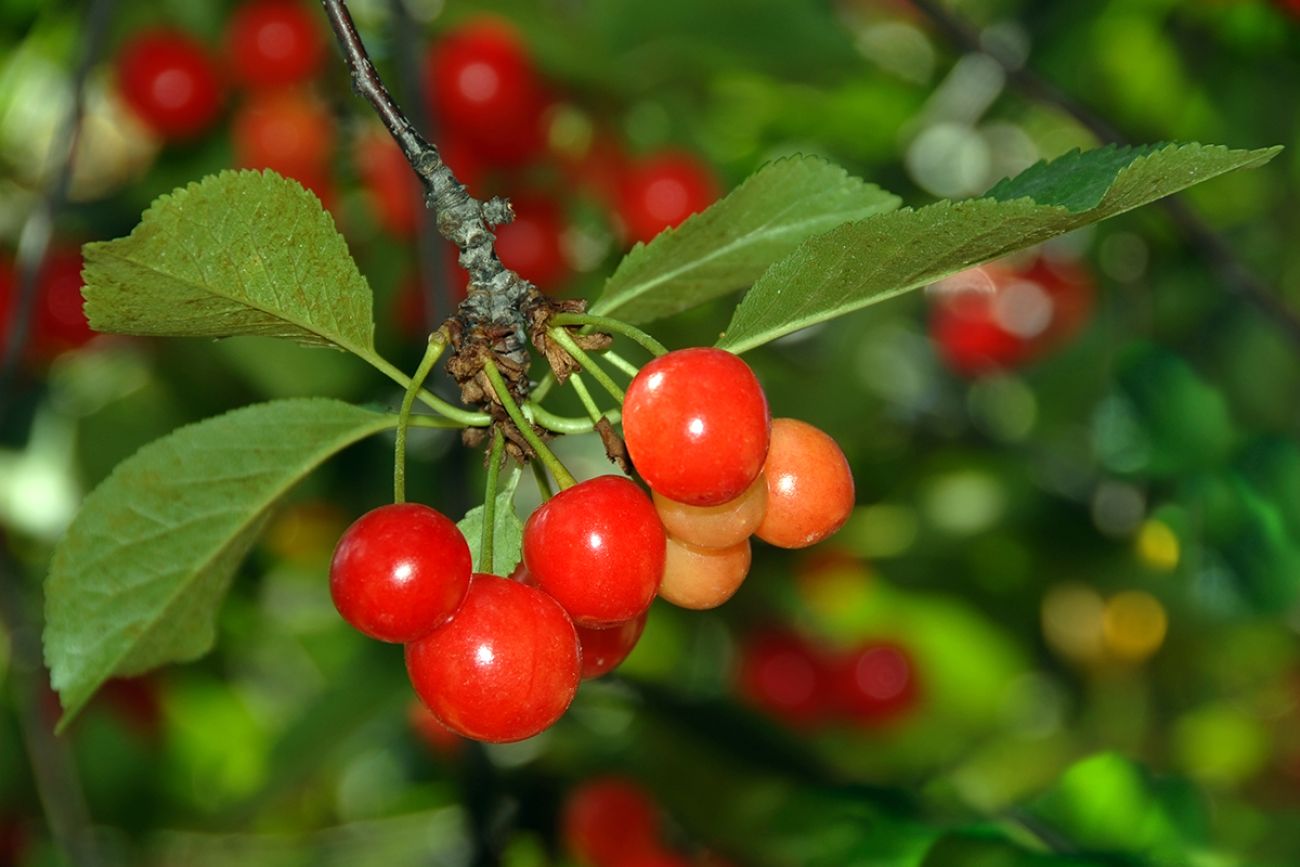Tart cherry production drops in Michigan, plagued by bad weather, imports

- Dry weather and severe storms caused tart cherry production to decline
- Farmers produced significantly fewer cherries than they have in previous years
- Farmers also are struggling because of cheap imports of Turkish cherries
Michigan cherry season is wrapping up, and production is down this year because of fluctuating weather, declining demand and falling prices.
All told, statewide farmers expect to harvest 108 million pounds of tart cherries, according to the Cherry Marketing Institute in DeWitt. As recently as 2018, the yield was 201 million pounds with a value of $280 million, according to state records.
That’s bad news in a state that produces 70 percent of the supply of tart cherries, in the United States — and farmers say their worries began with dry weather that plagued Michigan in June.
Related:
- Watch out! Creepy kudzu coming to Michigan?
- Moose herds threatened by ticks, brain worms, the result of climate change
- Michigan bills would give farmers ‘right to repair’ tractors, equipment
The influx of rain that came in the weeks following was more harmful than good.
“When it does rain, we see more severe storms and those aren’t as nourishing to the trees,” said Juliette King McAvoy, vice president of marketing for King Orchards in Central Lake in Antrim County.
“When a whole lot of rain comes at once, it all runs down the hill and doesn’t soak in and nourish the plants like a nice gentle rain would.”
A hailstorm on July 21 was the cherry on top of a poor season, causing tree limbs to fall and hurting the harvest.
Statewide, the harvest for tart cherries (also known as Montmorency cherries) is between late June and early July, but colder weather extends the season in northern Michigan.
In the Traverse City region, where much of the state’s cherries are grown, farmers are trying to yield as much of the fruit as possible after a challenging season.
The Cherry Marketing Institute estimates that northern Michigan will produce only 55 million pounds this season; currently, the area has produced about 30 million pounds.
Sweet cherries contain more natural sugar and are eaten fresh, while tart cherries are processed into ice cream, yogurt and other foods.
Over the past 10 years, the market for tart cherries has declined due to imports from eastern European countries like Turkey, making prices drop dramatically.
Now, farmers are seeing a decline in demand for sweet cherries, with a 2021 report by Michigan State University Extension finding that costs for growing them exceeded rates of return.
“The federal government does not protect domestic farmers,” said King McAvory. “Michigan growers want to see Michigan cherries and Michigan apples at the grocery store.”
Michigan farmers in 2019 sought a 650 percent tariff increase on Turkish cherries. The request was rejected in 2021, after the U.S. International Trade Commission found that tart cherry producers were “not materially injured” by Turkish imports and that there weren't enough Turkish cherries imported to significantly impact the market.
“The industry is working hard trying to figure out if there are other products or blends that we can use cherries in because they have a ton of benefits,” said Michael DeRuiter, vice president of DeRuiter Farms in Hart in west Michigan.
Labor and production costs have also impacted many farmers and agricultural workers across the industry.
Fruits like peaches, which are harvested starting in mid-August, and apples, which are harvested starting in mid-September, have to be handpicked, unlike cherries, which are mechanically harvested.
The biggest concern is the growing cost of labor, DeRuiter said. Typically, he employs locals to pick the fruit, but in recent years, he couldn’t find enough workers. Many farmers rely on the H2A program, which allows agricultural employers to hire seasonal workers, but it may be costly.
“The returns aren’t going up faster than the input costs,” he said. “Labor is going up double-digit percent every year.”
As cherry season wraps up and fruit farmers are preparing for the peach and apple harvest, DeRuiter said he and other fruit farmers are optimistic.
“Even if we have a bad year, we always look to the future,” DeRuiter said. “Farmers are pretty relentless, and we push forward.”
Editor's note: This article was corrected at 3:36 p.m. on Aug. 2 to correct the name of the orchard that employs Juliette King McAvoy.
Michigan Environment Watch
Michigan Environment Watch examines how public policy, industry, and other factors interact with the state’s trove of natural resources.
- See full coverage
- Subscribe
- Share tips and questions with Bridge environment reporter Kelly House
Michigan Environment Watch is made possible by generous financial support from:
Our generous Environment Watch underwriters encourage Bridge Michigan readers to also support civic journalism by becoming Bridge members. Please consider joining today.
See what new members are saying about why they donated to Bridge Michigan:
- “In order for this information to be accurate and unbiased it must be underwritten by its readers, not by special interests.” - Larry S.
- “Not many other media sources report on the topics Bridge does.” - Susan B.
- “Your journalism is outstanding and rare these days.” - Mark S.
If you want to ensure the future of nonpartisan, nonprofit Michigan journalism, please become a member today. You, too, will be asked why you donated and maybe we'll feature your quote next time!






